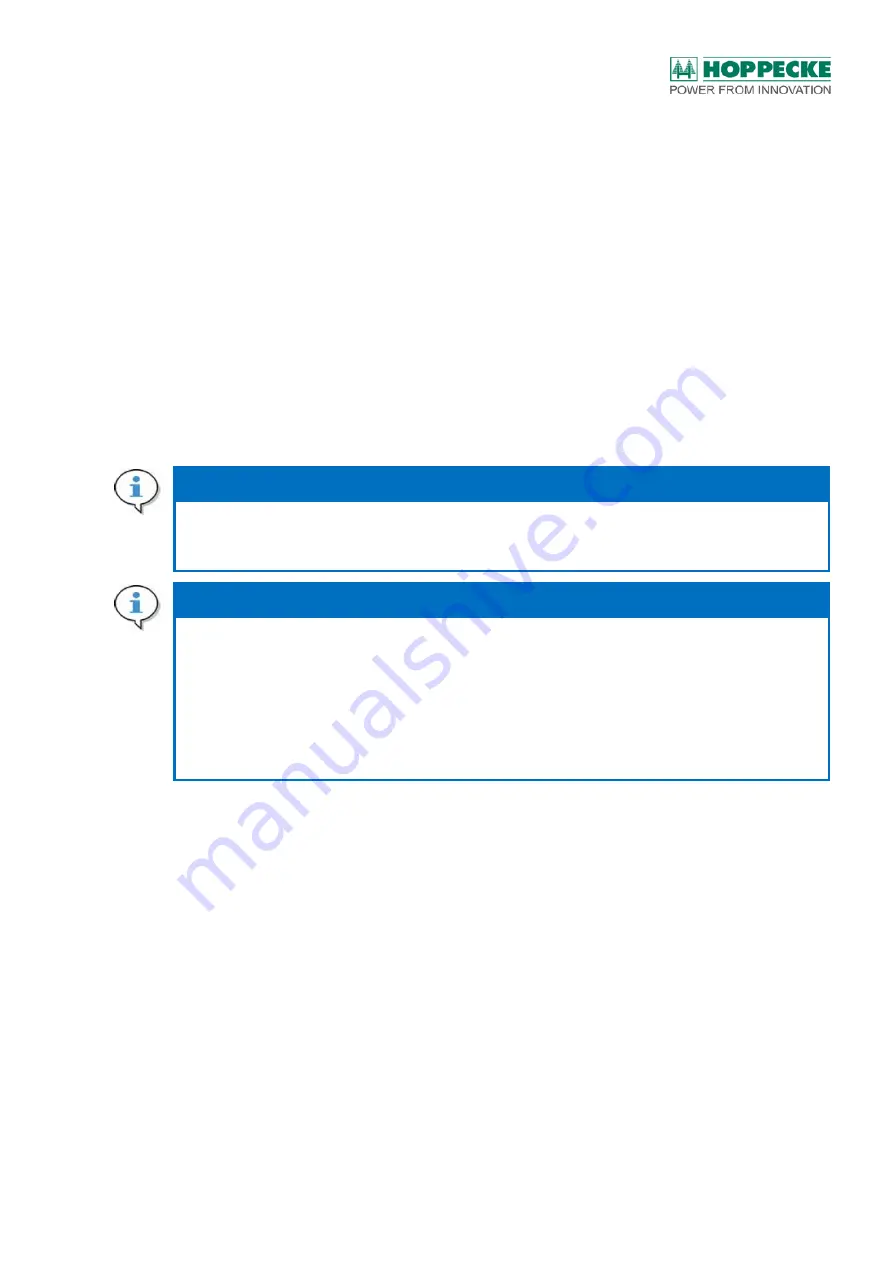
Function and structure
Batteries_Rail_Power_Manual_en02.docx
22
The switchover from the low voltage level (float charge) to the higher voltage level (boost
charge) takes place when the charge current I
50
is exceeded.
The switchover from the higher voltage level (boost charge) to the lower voltage (float
charge) takes place when the charge current falls below the same I
50
.
To avoid battery damage, it is necessary to switch from boost charging to float charging at
battery temperatures ≥ 45 °C. The hysteresis must be selected in such a way that the
switch-back to boost charging does not occur until a
temperature of ≤ 40 °C is reached.
The recommended maximum charge current is 1.0 x I
5
.
Charge voltages at 20 °C:
•
Float charge = 2.25 V per Cell
•
Boost charge = 2.35 V per Cell
Note
If the battery temperature ≥ is 60 °C, the charging process must be interrupted to prevent
damage to the cells. Select a control that does not resume charging until the battery temperature
has dropped to ≤ 55 °C
Note
You can assume that the temperature sensor is defective if the battery charger is measuring
temperatures above +80 °C or below -50 °C. The battery charger will not be able to operate the
battery if the temperature sensor is not in the correct range.
In this case, set the battery charger so that the charging voltage is limited to 2.21 V/cell (float
charge at 30 °C).
The battery charger should generate a SERVICE message and the defective temperature sensor
should be replaced within a few days.
















































